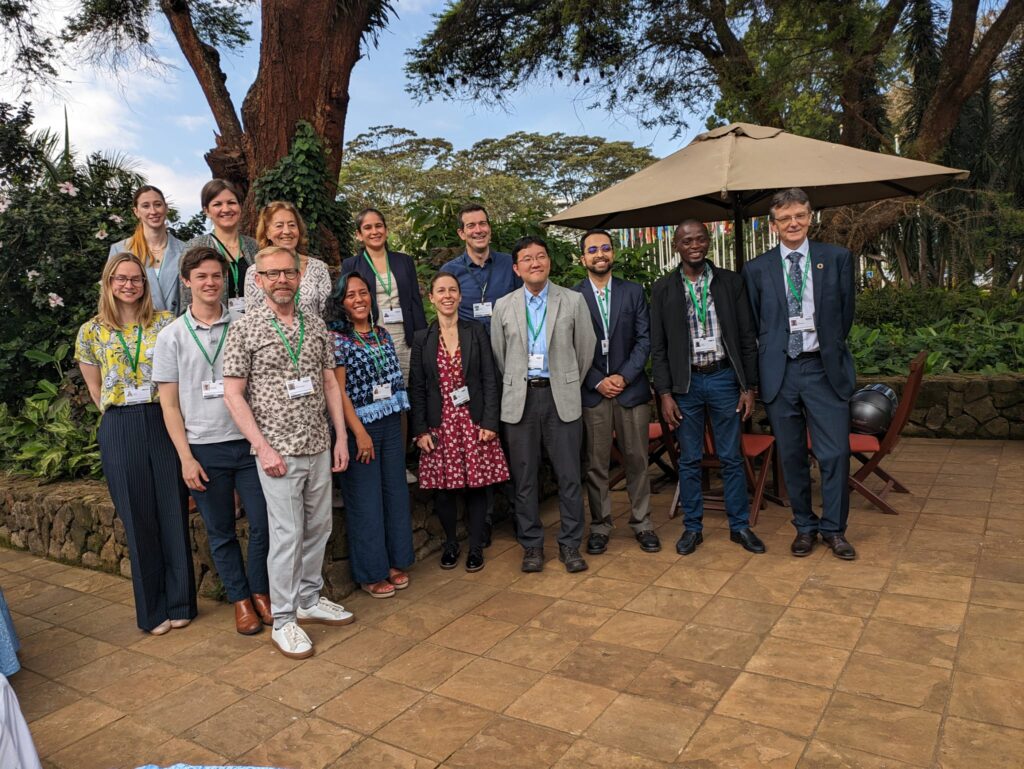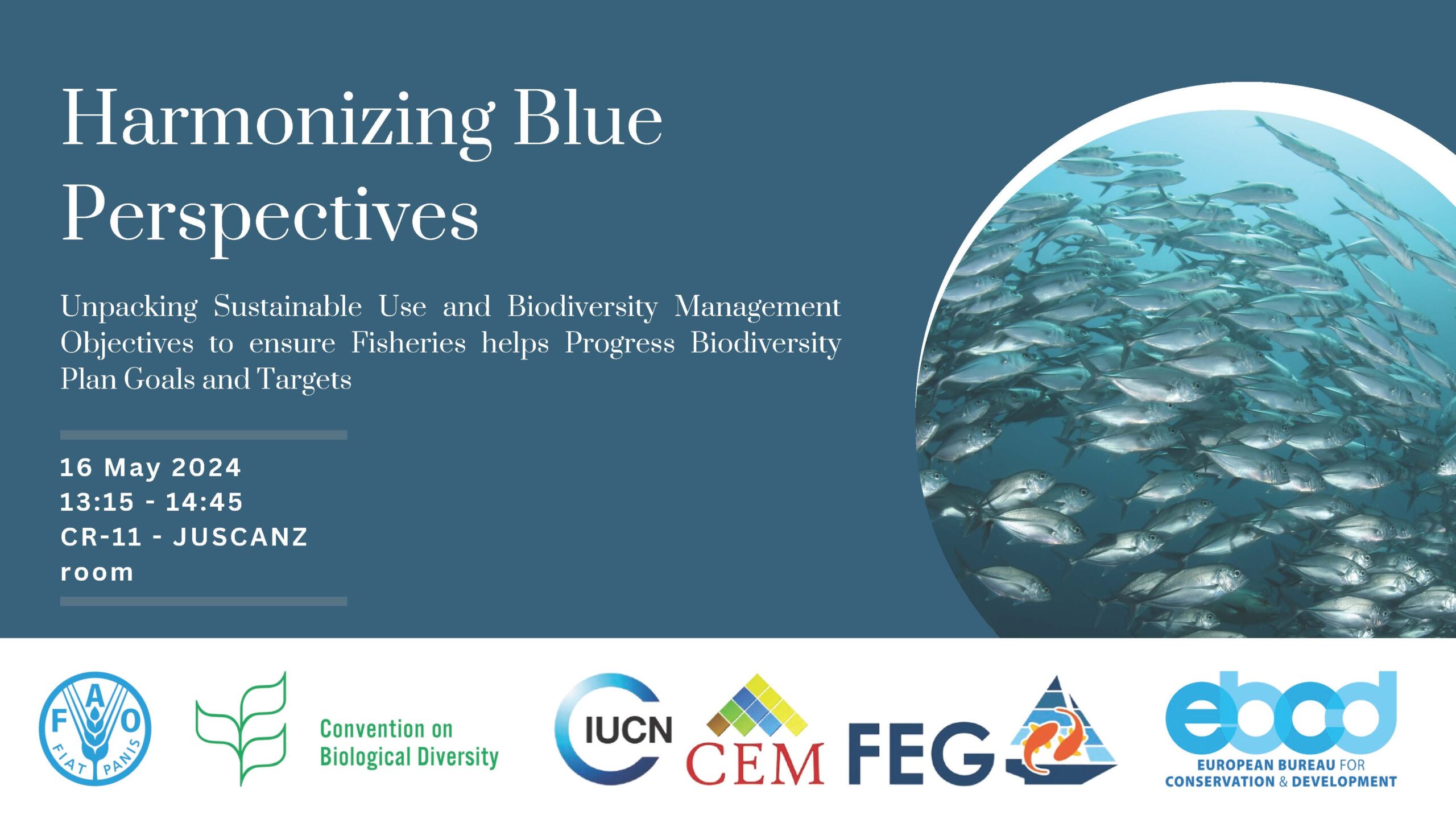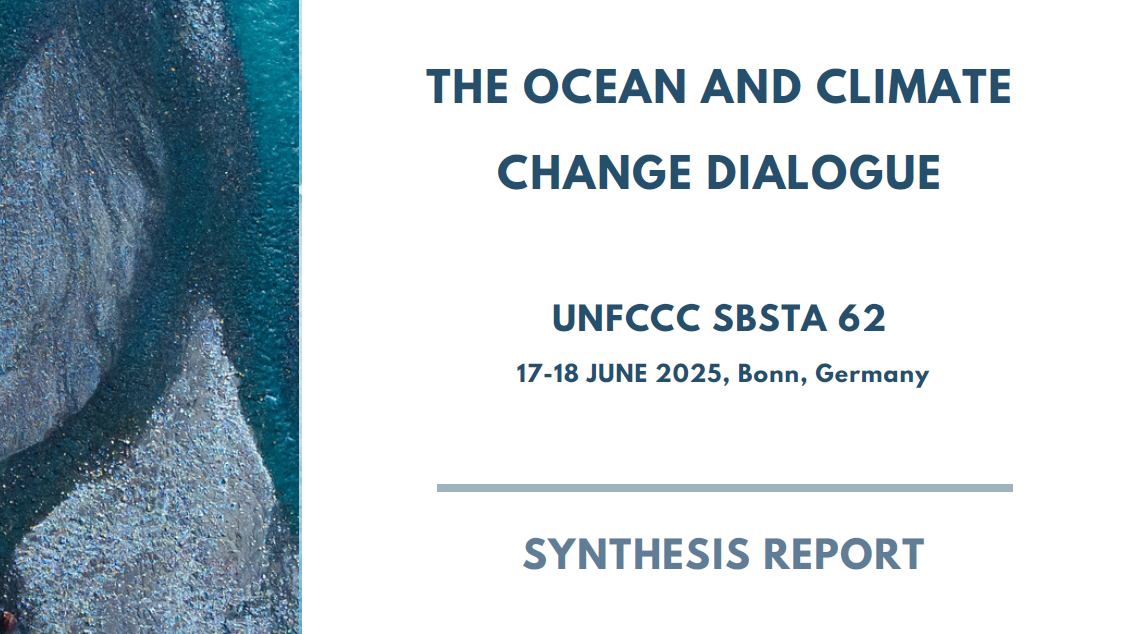EBCD actively participated in the 26th meeting of the Convention on Biological Diversity’s Subsidiary Body on Scientific, Technical and Technological Advice (CBD SBSTTA-26), held from 13-18 May in Nairobi, Kenya. The body, which meets annually, was established to evaluate the scientific and technical aspects of the recommendations provided to the Conference of the Parties (COP).
More than 1000 participants attended SBSTTA to tackle an ever-broadening agenda. Although time pressure built quickly, SBSTTA adopted nine recommendations to COP. The focus of the meeting was on facilitating the implementation of the recently adopted Kunming-Montreal Global Biodiversity Framework (GBF). In this regard, all SBSTTA agenda items addressed this issue. The items followed most closely by EBCD were 1) the GBF monitoring framework and 2) marine and coastal biodiversity, including ecologically or biologically significant marine areas (EBSAs).

Aiming at highlighting the importance of mainstreaming biodiversity in fisheries management and getting fisheries included in the GBF implementation discussions, EBCD co-hosted a side-event together with the FAO, the CBD Secretariat, and the IUCN-CEM-Fisheries Expert Group (FEG) on 16 May. This side-event, titled ‘Harmonizing Blue Perspectives’ unpacked how fisheries stakeholders can deliver on the GBF.
During the event, FAO outlined the various challenges fisheries face in operationalising the Global Biodiversity Framework, how the Framework can be translated successfully across fisheries, and what FAO is doing to facilitate this. It was stressed that implementation of the GBF requires a bottom-up approach and that narratives need to be built around local communities to mainstream biodiversity in fisheries. FEG highlighted the challenges fishers face in relation to Targets 9 and 10, emphasising the importance of catering to socio-cultural and economic needs of people in the sector.
Following presentations, a panel discussion kicked off with delegates from Canada, Japan, Malaysia, and Namibia. Providing national examples, all participants addressed how they are translating the GBF into local on-the-ground action, how they are building synergies between departments, what kind of capacity building is taking place, and how fisheries actors are being incorporated into decision-making processes.
The side-event slides can be accessed here.




